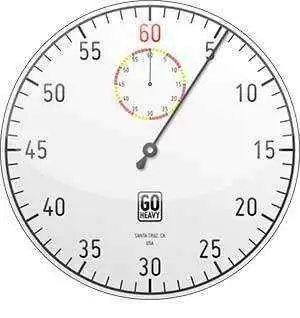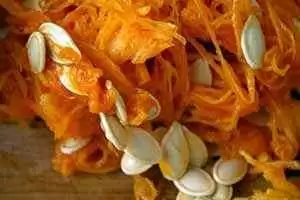.webp.6e7bbbf8793807aefc1e09163e1cb79c.webp)
Celiac.com 12/14/2011 - Finding a slice of pre-packaged gluten-free bread that is 100% enjoyable seems to be the bane of many celiacs. So you finally decide to make your own. You read up on baking breads; you spend money to buy the ingredients; you take the time to prepare the mixture, then you put your creation in the oven. Oh, the wonderful aroma of bread begins to fill the air. You wait in anticipation. Finally, the oven timer goes off and you remove your creation, only to discover that something went terribly wrong! Don’t despair. Below are some of the more common problems and solutions.
Bread machines have become very popular. While they are tooted as being time-savers, baking bread in the oven actually takes very little extra time and effort, and usually yields better results.
Celiac.com Sponsor (A12):
The most common complaint in gluten-free bread-baking is that the top of the loaf is dark brown while the inside is still doughy. If this is a problem for you, try lowering the oven temperature by 25 degrees the next time you bake, and set your oven rack higher. After the loaf is partially baked, cover it with a piece of foil for the remainder of the baking time. A sure-fire way to get the inside to bake thoroughly is to use two small loaf pans instead of one large one. Something else that will cause your bread not to bake through is the density factor, which leads us to issue number two.
Number two in the complaint department is that gluten-free breads are too dense and heavy. The alternative flours are heavier than wheat flour, so “tricks” must be played with the dough to obtain lighter, wheat-like results. The use two smaller pans to bake the bread instead of a single large pan will also help avoid this problem by giving the bread more room to expand. You can also use a bit more leavening and sugar (the sugar-to-yeast ratio must remain the same for the bread to rise properly). Use only fresh yeast that is dissolved in warm—not hot—liquid; if the liquid is too hot, the yeast will not rise properly.
Another trick is to have all of the liquid ingredients at room temperature, and then whip the liquid ingredients together in a blender to incorporate more air before adding them to the flour mixture. You can also use a little less xanthan gum, and be sure to blend the dough mixture thoroughly, and then knead it a little more.
The issue of how much liquid to use to make your bread lighter is much more confusing. If you are using an egg replacer, you may need to add a little more liquid to replace the liquid in eggs. If you use extra large eggs, and your bread is too dense, try using a smaller size egg. For a lighter loaf of bread, use slightly less liquid in the recipe; this also applies if you live at a high altitude. When baking at very low altitudes, slightly increase the amount of liquid. If you are not confused yet, then continue reading!
Different gluten-free flours absorb different amounts of liquids. Some alternative flours require that you add more liquid to your recipe to prevent the loaf from being too dry and crumbly, while others require that you reduce the amount of liquid used to enable the loaf to be lighter and less dense so that it will bake evenly all the way through. Now “humidity” quietly enters into the picture. If it is humid, reduce the amount of liquid. Ultimately, only experimentation will determine exactly how much liquid will be needed for the flours you are using.
Have you ever taken a perfect loaf of bread out of the oven, only to watch it slowly collapse as it cools? You are not alone. This usually indicates that the bread is not completely cooked inside. The simplest remedy is to use two smaller baking pans instead of one large one. Increase your oven temperature slightly, and slightly decrease the amount of liquid used.
After experimenting and adjusting oven temperatures, amounts of liquids used, types of flours used, you finally remove the perfect of loaf bread from the oven. You wait in anticipation for it to cool. You get out the knife to cut your first slice—and it crumbles. Oh, the disappointment! The dough was too dry, resulting in a loaf that will not hold together. First—do not throw out the crumbs! Put them in a small freezer bag and freeze them for the day when you want to make bread dressing, croutons, a crumb topping for a casserole, or breadcrumbs to coat fish, chicken or pork chops, or for use in a meatloaf.
To avoid the crumbling when you make bread in the future, reduce the amount of flour mixture slightly. Add a little more binding by increasing the amount of xanthan gum or dough enhancer. Use milk (cow, soy or rice) in place of the water called for in the recipe. Once the bread is baked, cool the loaf completely before slicing it with a serrated knife that has been sprayed with a gluten-free nonstick spray.
There are many variables when baking with gluten-free flours and yeast. The important thing to remember is that the “real” taste of bread is achievable. All the time spent in trial and error will be worth it—enjoy!
No-Knead Toasting Bread
This bread slices without crumbling, is moist, and is perfect for toasting!
Ingredients:
3 eggs
1 ½ Tbsp. warm water
1 Tbsp. quick-rising gluten-free yeast
¾ tsp. sugar
¾ cup milk
2 cups gluten-free flour mixture
½ tsp. gluten-free baking powder
1 tsp. cinnamon
¼ tsp. salt
½ cup + 1 Tbsp. sugar
¼ tsp. cider vinegar
2 tsp. gluten-free mayonnaise
4 Tbsp. butter, melted
½ cup gluten-free flour mixture*
1 egg
1 Tbsp. sesame seeds
Directions:
- Place 3 eggs in a bowl of warm water for 10 minutes. In a small bowl, stir together the 1 ½ Tbsp. warm water, yeast, and ¾ tsp. sugar; set aside for 15 minutes. Scald milk, then let it cool till lukewarm. Sift together the 2 cups flour mixture, baking powder, cinnamon, salt, and sugar; set aside.
- In a mixer bowl, mix together vinegar, mayonnaise, eggs and melted butter. Add the yeast and milk and beat until smooth. Slowly add the flour mixture, beating at low speed until blended. With a spoon, stir in the remaining ½ cup of flour mixture.
- Generously spray a loaf pan (9X5”) with gluten-free nonstick spray. Spoon the batter into the pan. Dip a spoon in a little gluten-free flour and use the back of the spoon to smooth the dough in the pan. Whip the remaining egg with a few drops of warm water, then brush this egg mixture on top of the loaf. Sprinkle loaf with sesame seeds. Spray one side of a piece of waxed paper with gluten-free nonstick spray; cover loaf with paper, sprayed side down.
- Place a bowl of very hot water on the bottom shelf of the oven. Place the loaf pan on the shelf above the water. Close oven door and let the dough rise for 1 hour. Remove water and loaf pan from oven. Preheat oven to 350F for 10 minutes. Remove waxed paper and place bread in oven to bake for 25 to 30 minutes.
- If the top of the bread is browning too quickly, cover pan with a sheet of foil until loaf is baked through. Let baked bread sit in pan for 5 minutes, then remove bread and let it finish cooling on a wire rack. If you are not going to be eating the bread the day you bake it, wrap it well and freeze it.
Spray a serrated knife with gluten-free nonstick spray to cut the bread.
*Gluten-free Flour Mixture:
The flour mixture I use is a combination of rice, potato starch, tapioca and garbanzo bean flours, cornstarch and xanthan gum. If you are allergic to any of these products, alternative flours may be substituted.







Recommended Comments
Create an account or sign in to comment
You need to be a member in order to leave a comment
Create an account
Sign up for a new account in our community. It's easy!
Register a new accountSign in
Already have an account? Sign in here.
Sign In Now